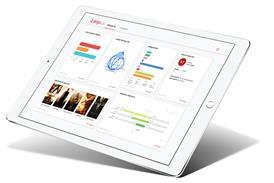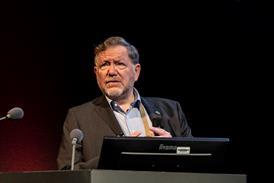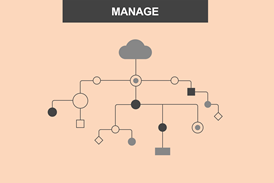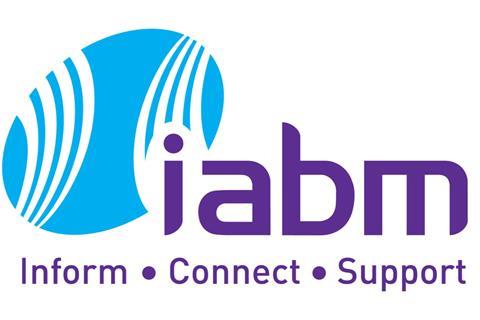The Connect & Produce Anywhere project is one of the eight Challenges in this years cohort for the IBC2023 Accelerator Media Innovation Programme. The project is championed by DAZN, Sky Sports, BT Media & Broadcast, Vodafone Group, BBC, TV2, and the participants are LAMA, VizRT, Open Broadcast Systems, Zixi, InSync, Limitless, Singular.live, Google, Techex, Microsoft, AMD, Grass Valley and Verizon Business.
The Challenge
The specific challenge as stated on the project site is:
We’re starting to see a future where instead of driving big metal hardware up a motorway, we can click a mouse to virtually move a vision mixer to the cloud or edge compute at an event, allowing us to virtually deploy resources anywhere that best fit any given production.

Detaching people from the event location brought us the remote production. In this project, we want to detach software from hardware and deploy a distributed computing architecture between ground and cloud, exploring the benefits & challenges of such an approach.
The Challenge is to… Dynamically move live production media processing stages between cloud and edge computing at an event. Allowing us to deploy software to the best location making the most efficient use of resources in a bandwidth constrained location.
Cloud computing, and Edge processing are not new to the broadcasting industry, however, this project looks to explore the potential inherent in the technology. Scott Davis, Broadcast Media Architect, IPS, Microsoft, one of the participants in the project, explained: “The project is unique as it entertains the question, ‘Where is the cloud, and is the edge our new space to work on the process of production and acquisition for content?’” he said. “Can we make edge processing more useful and meaningful for the broadcaster, making the production “edge” look and feel like their cloud? While we do this, how can we address concerns about the environmental impact of production? How can we enable the best people to be part of a production without making all of them drive across the planet for each event?”
The Problem
Covering live events can be complex, even the smallest productions call for OB vehicles, build ups, tear downs, and the scheduling and planning of people and equipment. Ian Wagdin, Senior Technology Transfer Manager, BBC, one of the project’s champions, describes the focus of the project: “The main problems we aimed to solve were to build a sustainable scalable architecture that could be deployed for small- and large-scale events and enable production teams to make choices on where and how it was operated from,” he said. “This won’t be solved in year one, so first we needed to understand what current solutions look like and what our aspirations are for future working methods.”
Davis expanded on the some of the questions that are being addressed, “If we had infinite bandwidth, we could simply run the cameras to the cloud,” he said, “But those environments do not always present themselves. Could we bring the ‘cloud to the media’ by using the processes that broadcasters are more accustomed to now? Would we be able to keep some of the equipment on premises but simply reconfigure it for the needs of the event based on the desires of the producer - swapping out one media function from one vendor for another based on the requirements of who is creating the show that day? Can we migrate the software loads from cloud to edge in a seamless manner that allows broadcasters to reuse licenses and decrease effort?”
The Goal
Wagdin discussed the overall goal of the project. “We have all looked at remote and cloud production for a number of years, various solutions have arisen, and we now have a complex landscape of different solutions for different scenarios,” he said. “We suspect we can be more flexible, make better use of resources, and cover more events if we had a truly flexible software-based solution, but wanted to do a deep dive into what the challenges were. Alongside this we had new ideas in the mix such as edge compute that we want to test and understand as well as constrained connectivity issues at various points in the production chain.
“This accelerator asks, ‘What do you do when you can’t just use infinite cloud or infinite bandwidth to solve your production problems, and can we start to use software on generic compute instead of bespoke hardware?” said Davis. “We see this as us thinking on how to migrate legacy hardware processes to software while asking questions about sustainability and viability. Since we instigated the IBC Champions project, some members in industry have coined the phrase ‘Software Defined Broadcast’ to define what we are working on in creating a flow where hardware can be reconfigured on the fly with arbitrary software for the purposes of delivering new options on the fly for events.
Participants
IBC’s Accelerator programme creates an environment that brings together multiple companies and individuals with a broad range of skills.
Davis explained the advantages of this collaborative approach. “Technology companies cannot solve industry problems in a vacuum,” he said. “Mutual collaboration is required to accomplish what’s required. If we focus on a set of well understood problems, we are also able to stand up in front of the industry and point in a single direction to enable all of us to pick a point to navigate towards. We get to leverage the power of the industry.
He described Microsoft’s contribution to the effort. “We are providing Azure HCI Stack edge chassis and ARC cloud management,” he said. The stack edge is, as the name implies, edge compute resources that allow broadcasters to use selected ISVs and deploy their software to the general compute instances for video and audio mixing, graphics, replay, and other content production elements. ARC allows the management of the software across the infrastructure and into the cloud for performance monitoring, compliance management, deployment, and other features that allow the team managing the software side of the project to move loads around as desired.
The Accelerator Process
IBC’s Accelerator programme is unique in the industry for providing a safe place for a variety of companies, sometimes competitors, to come together and collaborate on solutions that benefit the entire industry.
Deon Burgess, Production Innovation Manager at Sky, one of the Champions, described the advantage of working in this type of environment, “The Accelerator enables the champions to discuss and push the industry in a safe agnostic environment,” he said. “Having the space located in the Techex office allows us to test ideas out without affecting our own individual production environments. The space being created is unique to all champions.”
“For BT Media and Broadcast”, said John Ellerton Head of Futures and Innovation, at BT Media and Broadcast, another Champion, “collaborating with others on this project has been really valuable. As a Service Provider, having inputs from broadcasters to shape workflow requirements and from vendors to shape technology capabilities is always essential. An in-house project would have required significantly higher investment to deliver the same return.”
The BBC’s Wagdin agreed: “What the accelerator brings is the ability to work together to brainstorm ideas and look at solutions without the pressure of existing deliverables and commercial agreements,” he said. “We really can start with a blank sheet of paper and build solutions that are understood by the whole community.”
The Showcase at IBC
Each Accelerator programme culminates in a showcase on the Innovation Stage at IBC2023 in September. Catch the Connect & Produce Anywhere project, showcasing its Proof of Concept and findings at IBC2023, Sunday 17th of September, from 10:45-11:45 at the Innovation Stage.
Wagdin described what show attendees can expect: “The demonstrator will be a quite simple example of how the workflows will come together,” he said. “We did not want to be constrained by showing a single event or building a bespoke solution. We will have a ‘venue’ at Techex in Bracknell where our cameras, video, and audio will be located connected to the edge compute. We will then send a multiviewer and programme out feed to Amsterdam. The connectivity here is extremely constrained, but this is where we intend to operate from. We want to be able to make a decision on what tools we want for what part of the workflows, so it feels like the operator is not having to learn a new interface.”
Benefits
Ellerton described the Accelerators’ benefits for BT. “In the immediate term the project has enabled us to understand much better what is achievable in cloud edge processing for live media services, and the remaining challenges to be solved,” he said. “It has also enabled us to build working relationships with key thinkers across the industry. Longer term, we may provide services in this space so the project has helped to shape our thinking of what may be of value to the industry.”
Sky’s Burgess emphasised the importance of the mix of participants that the Accelerator provides. “A shared understanding and a space for some smaller vendors to showcase their software,” he said.
“In the long term, a single voice from key broadcasters may move the conversation on with what’s possible in the future and break down the barriers.”
Read more IBC2023 Accelerators in full



























No comments yet